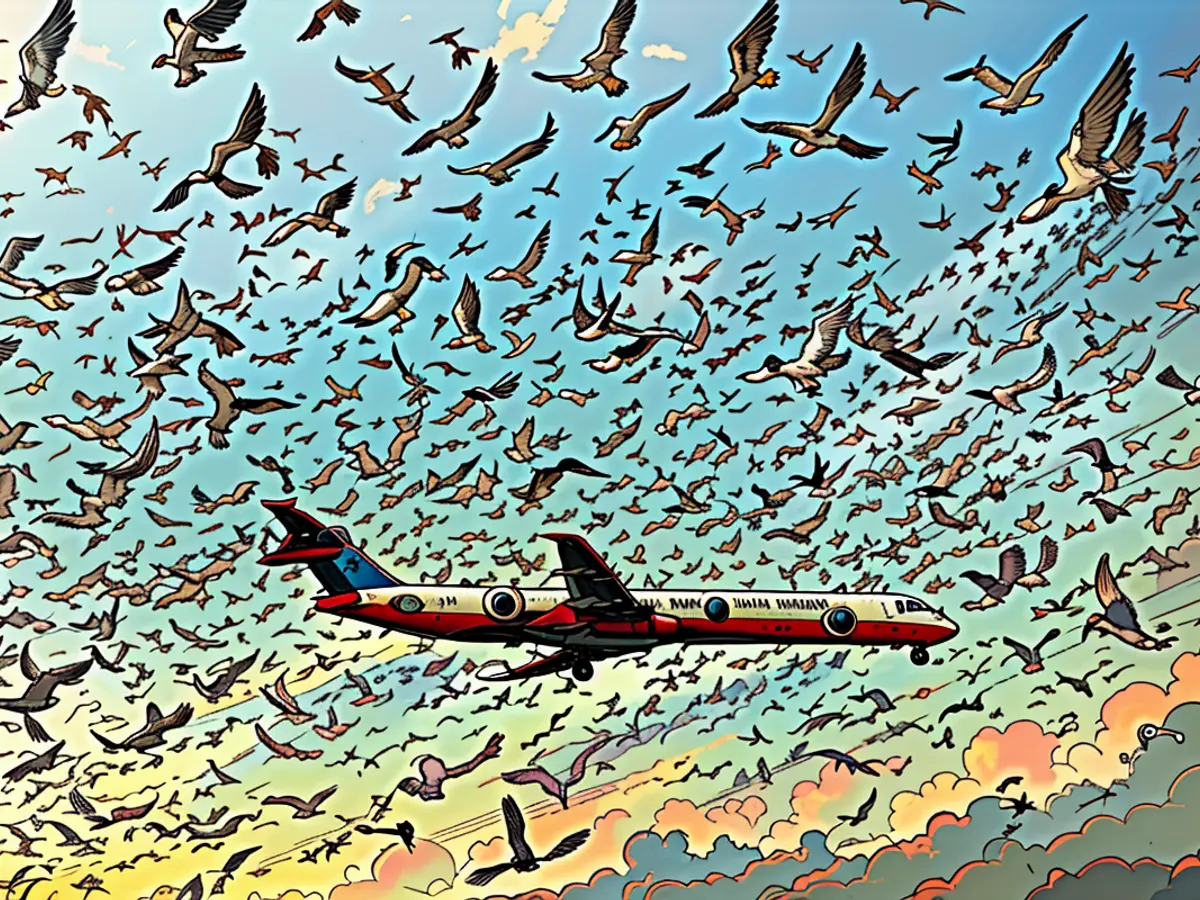Aviation Mishap: The Consequences When a Plane Strikes a Bird
The flight continued despite a single engine, successfully landing the plane carrying 73 passengers and crew at the Invercargill airport in an emergency situation. The incident was attributed to a potential bird collision, although Queenstown Airport dismissed the possibility of such an incident at that time.
Virgin Australia did not divulge the specifics, but bird collisions are a common and genuine concern for aircraft. They can cause damage and, in extreme cases, lead to fatalities.
A bird collision refers to a collision between an aircraft and a bird. This term may also include collisions with land animals such as deer, rabbits, dogs, and alligators on the ground.
Orville Wright documented the first bird collision in 1905, over a cornfield in Ohio. These incidents now occur daily, with some seasonal fluctuations due to the migratory patterns of birds.
A notable example is the bird collision that occurred with US Airways Flight 1549 in 2009. The plane, departing from LaGuardia Airport in New York, collided with a flock of migrating Canadian geese shortly after takeoff, causing both engines to fail. Captain Sully Sullenberger skillfully navigated the plane for an unpowered landing in the Hudson River.
Between 2008 and 2017, the Australian Transport Safety Board recorded 16,626 bird collisions. In the U.S., the Federal Aviation Administration reported 17,200 such incidents in 2022 alone.
Most of these collisions occur near airports, particularly during takeoff, landing, or lower altitudes where bird activity is most prevalent. The impact varies depending on factors such as the type of aircraft, and outcomes range from engine shutdown to fatalities, especially in smaller aircraft.
Pilots are trained to remain alert during early morning and sunset hours when birds are most active. Radar can be used to monitor bird flocks, but this technology is not globally available.
Major passenger jet manufacturers like Boeing and Airbus use turbofan engines that rely on a series of fan blades to compress air before adding fuel and ignition for thrust. A bird collision in these engines can cause severe damage to the fan blades, leading to engine failure. Engine manufacturers test the safety of these engines by firing a high-speed frozen chicken at them while they are operating at full thrust.
Airports implement measures to keep birds and animals away from the airfield. Techniques include using small gas explosions that mimic shotgun sounds to scare birds away from the runway, and planting specific grasses and plants that do not attract birds.
Doug Drury, a professor and head of aviation at CQUniversity Australia, discusses these issues.
Read also:
Traveling by air carries the risk of bird collisions, as highlighted by the incident involving Virgin Australia. These collisions can result in engine failure and potential fatalities, as exemplified by US Airways Flight 1549 in 2009.
Airports worldwide implement measures to prevent bird-related incidents, recognizing travel safety as a top priority.
- Fear of escalation in the Middle East: US Secretary of State Blinken travels to the region again
- Government circles: US Secretary of State Blinken to travel to Middle East again
- Bridging days 2024: How you can double your vacation this year
- Germany has wanderlust: how tour operators and airlines are looking ahead to the next travel year








